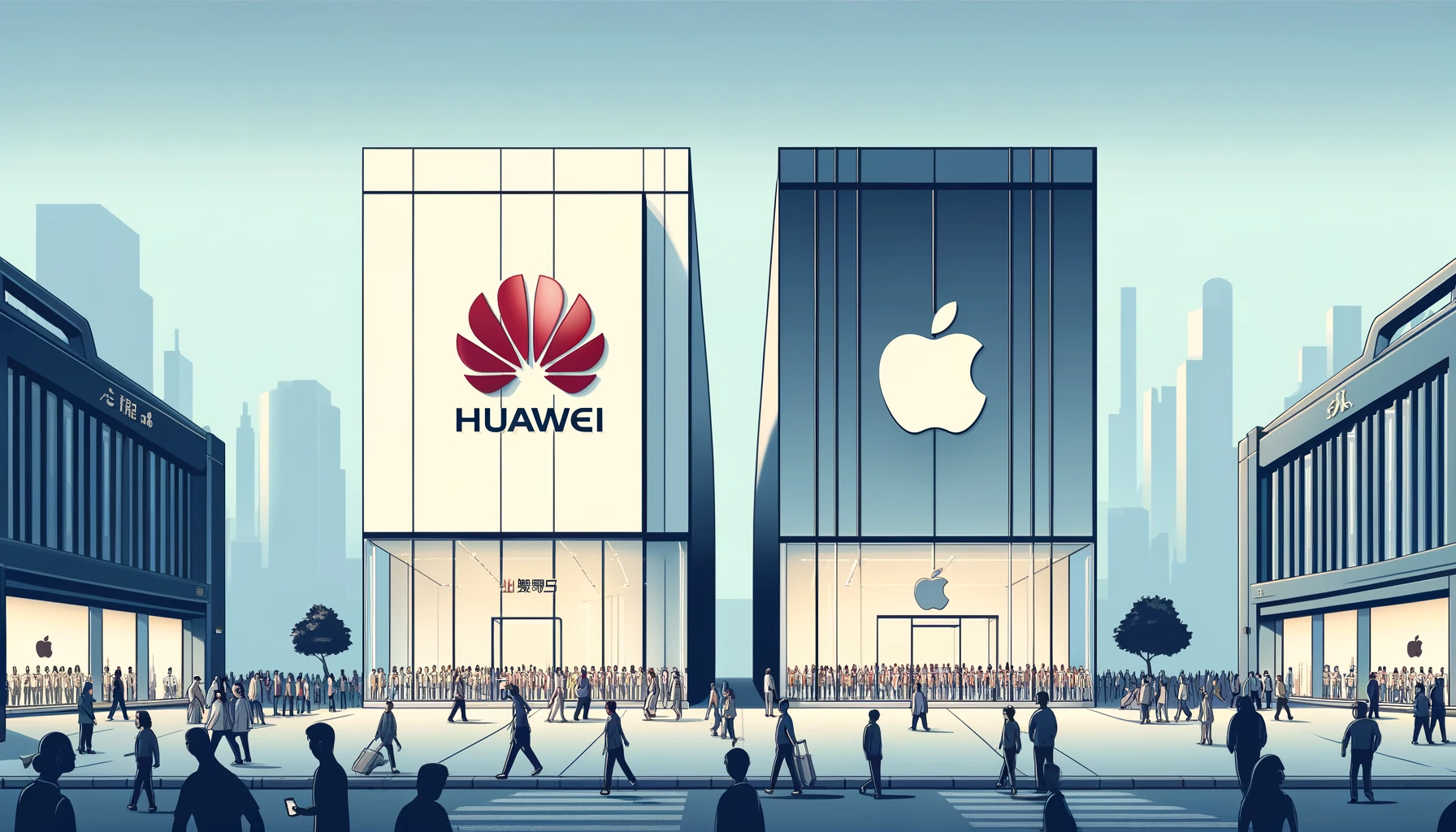
HONG KONG – Huawei is revolutionizing its retail strategy by opening flagship stores in China, aiming to reclaim its position in the premium electronics market, the world’s largest smartphone market. The company’s aggressive expansion includes strategically positioning some of its stores close to Apple (AAPL.O) shops, underscoring its determination to compete head-to-head with the American tech giant.
Situated directly across from Apple’s Shanghai flagship store, Huawei’s recently renovated shop spans three floors of a renowned heritage building in the bustling shopping district of Shanghai. This store features a coffee shop and a gym, creating a unique customer experience that differentiates it from its competitors.
Between December and February, Huawei inaugurated four flagship stores in major Chinese cities. This marks a significant shift for a company that previously depended heavily on licensed distributors. This change comes as Huawei rebounds from the crippling U.S. sanctions imposed in 2019, which had significantly impacted its smartphone business for four years until it managed to source domestic replacement parts.
“The Huawei flagship store is very nice. It looks much brighter inside compared to the Apple Store across the street,” said Amy Chen, a 27-year-old physiotherapist who recently visited the Shanghai store. She switched to Huawei’s top-end Pura 70 Ultra from the iPhone 15 Pro, hoping for better mobile reception.
Apple currently operates 47 stores in mainland China, while Huawei, which only began opening flagship stores in 2019, now boasts 11 such stores. According to Ethan Qi, associate director at research firm Counterpoint, Huawei plans to open more than 20 flagship stores, potentially narrowing the gap with Apple.
This expansion is a stark contrast to 2021, when Huawei’s licensed stores across China were forced to close due to product shortages caused by U.S. sanctions. However, Huawei has since developed its own chips and introduced popular 5G-capable products. According to industry sources, the company has also started aggressively recruiting dealers in recent months.
“As Huawei now manages to ship in large quantities, given the good profit margin they could provide, distributors have become willing to purchase Huawei devices again,” Qi explained. “Previously, many couldn’t get stock, and their 4G devices didn’t sell well.”
Huawei has been actively negotiating with distributors, offering above-industry-average profit margins for its phones and sometimes demanding exclusivity agreements. According to market research firm GeoQ, more than 5,200 stores licensed to sell Huawei products emerged in the first 10 months of 2023, with over half located in third and fourth-tier cities. This expansion has significantly increased Huawei’s network of distribution partners nationwide.
Huawei’s renewed marketing push poses a significant challenge to Apple, which saw a 6.6% drop in iPhone sales in China, totaling 10.8 million units in the first quarter, according to IDC data. In contrast, Huawei boosted its smartphone shipments by 110% to 11.7 million units in the same period, overtaking Apple as the No.2 smartphone vendor in China.
Huawei and Apple did not respond to requests for comment.
Lucas Zhong, an analyst at research firm Canalys, noted that Huawei had plans to expand its flagship stores since 2020. However, the progress was slowed by the U.S. sanctions, leading to a slower iteration of its high-end products. Although there are still supply chain issues resulting in shortages of specific models, these issues are now better controlled, and the new phones are receiving positive reviews. Analysts believe that Huawei is now focusing on selling premium products that compete directly with Apple.
The latest Pura 70 Ultra smartphone, for example, starts at 9,999 yuan ($1,300), matching the price of the iPhone 15 Pro Max. Meanwhile, competitors like Samsung (005930.KS) and Xiaomi (1810.HK) are keeping their premium model prices lower amid soft market demand.
Huawei’s luxurious flagship stores showcase a wide range of premium products, including smartphones, tablets, smartwatches, televisions, and electric vehicles made in partnership with Chinese automakers.
“Huawei now has a long product line,” Qi said. “They need big demo areas. They will have to do it themselves because their distributors don’t have the capability to rent such a massive area.”
The push to build more of its own stores also highlights Huawei’s heavy reliance on offline sales. Between 70% and 80% of Huawei’s sales come from physical stores, compared to about 40% for Apple, according to Toby Zhu, another analyst at Canalys.
“Xiaomi, Oppo, and Vivo are all being affected by Huawei’s comeback,” Zhu said, referring to other Chinese smartphone makers. “But for now, the biggest impact has been on Apple.”
The impact of Huawei’s retail resurgence is also being felt beyond mainland China. Simon Lam, owner of a popular smartphone shop named Trinity Electronics in Hong Kong, noted that more independent smartphone shops had started selling Huawei devices in recent months.
“Everybody is stocking up on some Huawei right now. Some more, some less,” he said. “People are willing to pay a lot of money for high-end Huawei, something other brands really can’t compare with.”
Key Statistics and Market Insights
| Company | No. of Flagship Stores | Q1 Smartphone Sales (Units) | Q1 Sales Growth |
|---|---|---|---|
| Apple | 47 | 10.8 million | -6.6% |
| Huawei | 11 | 11.7 million | +110% |
- Huawei is aggressively opening flagship stores in China, with some located near Apple stores.
- The new Huawei stores offer unique experiences, including a coffee shop and a gym.
- Huawei’s expansion contrasts with its 2021 struggles due to U.S. sanctions.
- The company’s aggressive recruitment of dealers has boosted its distribution network.
- Huawei’s marketing push is challenging Apple’s dominance in the Chinese market.
- Huawei’s focus on offline sales contrasts with Apple’s significant online sales.
Huawei’s strategic retail expansion and aggressive marketing blitz signal a significant shift in the competitive landscape of the Chinese smartphone market. With its new flagship stores and a renewed focus on premium products, Huawei is positioning itself as a formidable competitor to Apple and other leading smartphone makers.
Related News:
Featured Image courtesy of DALL-E by ChatGPT
